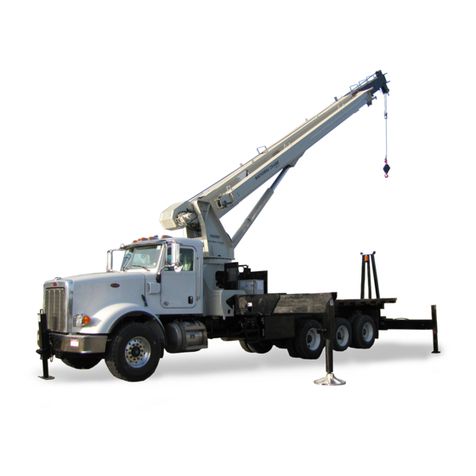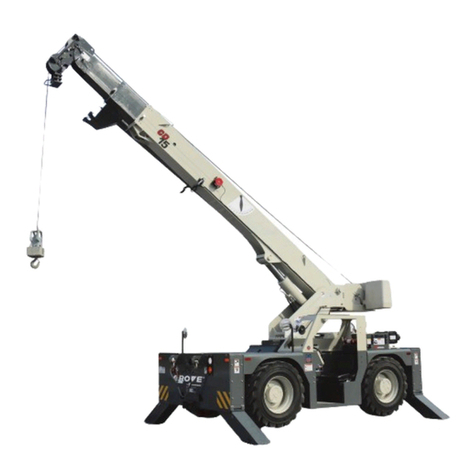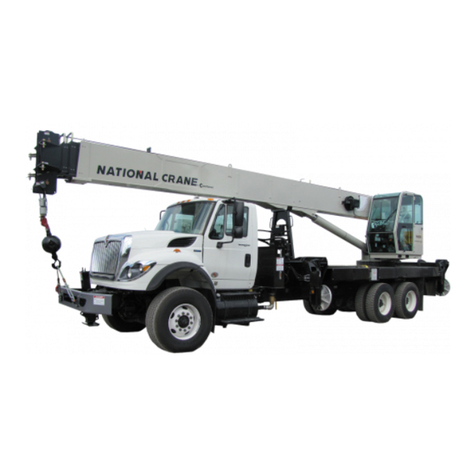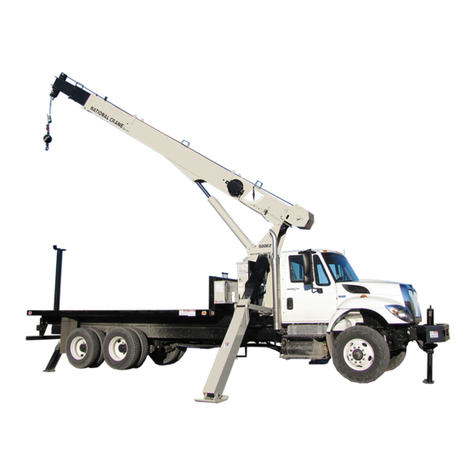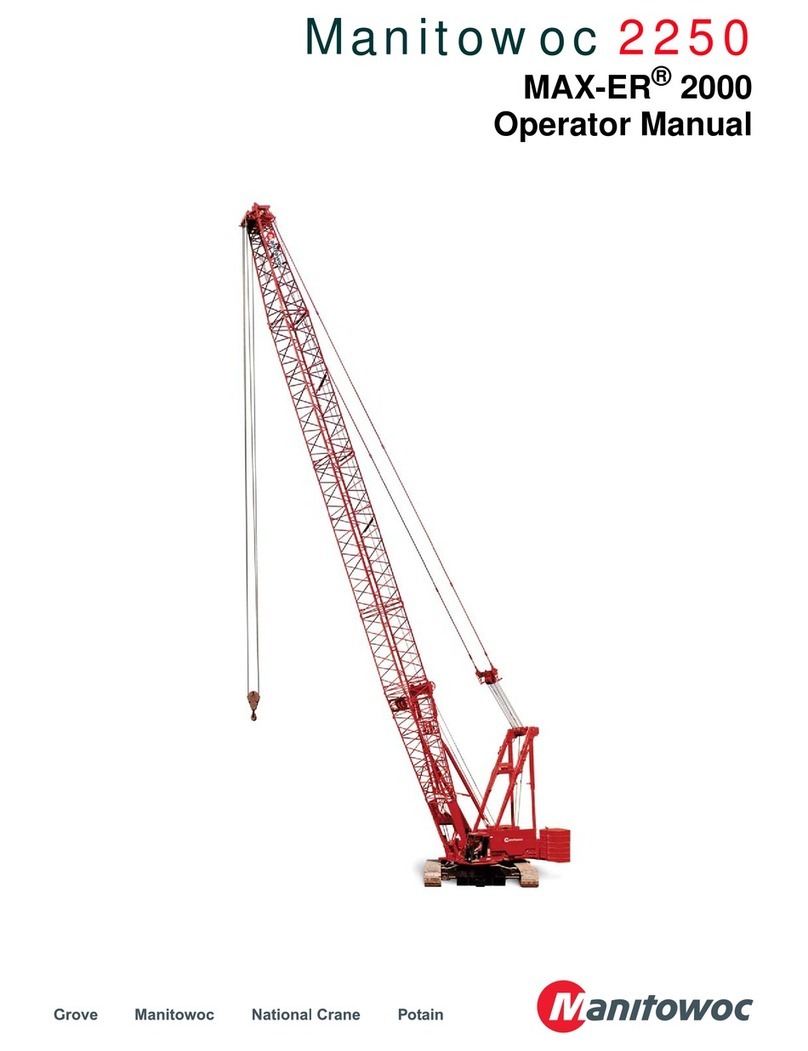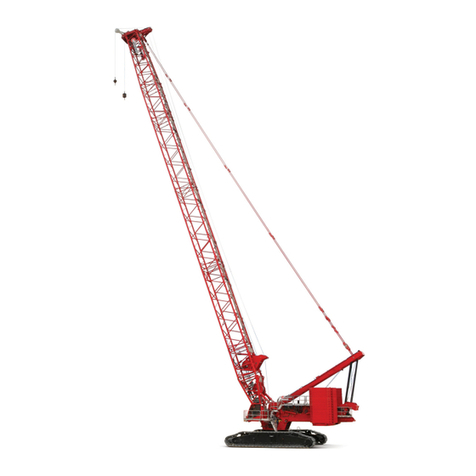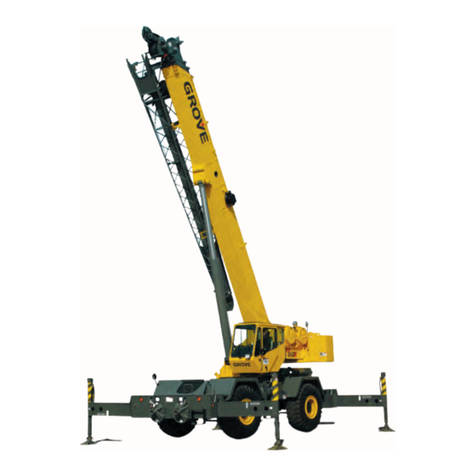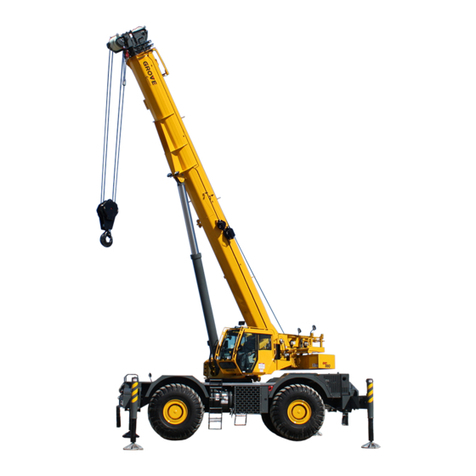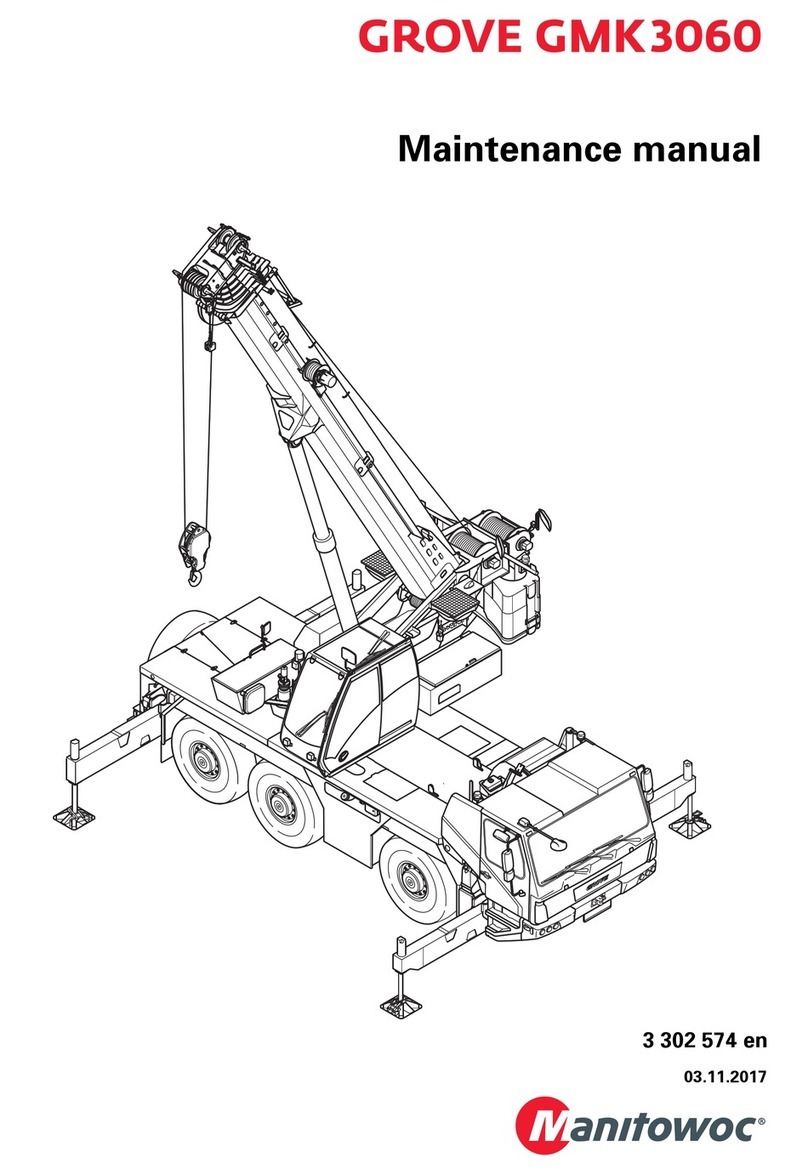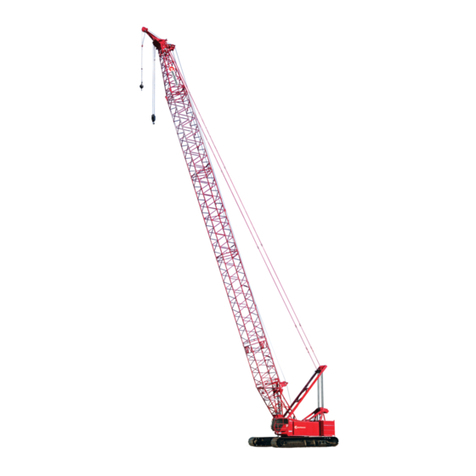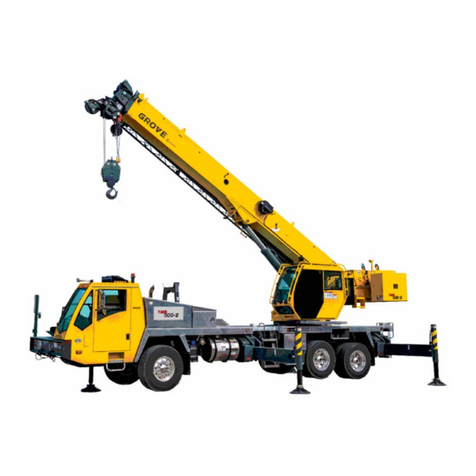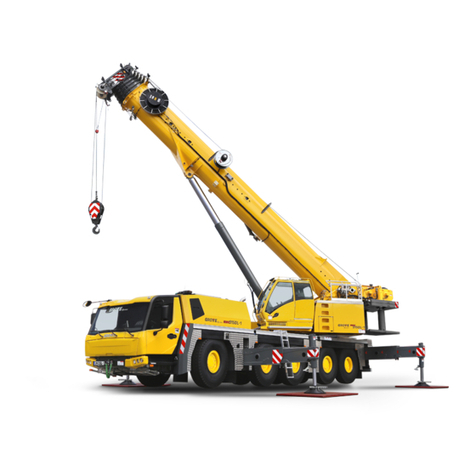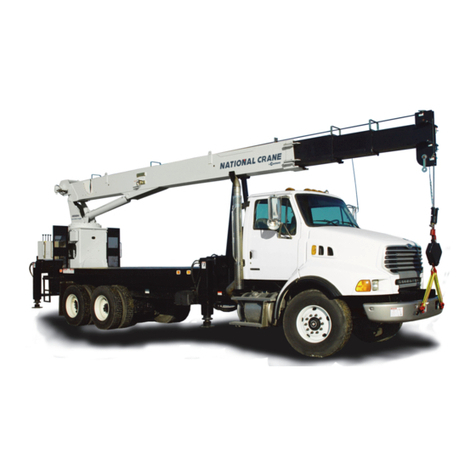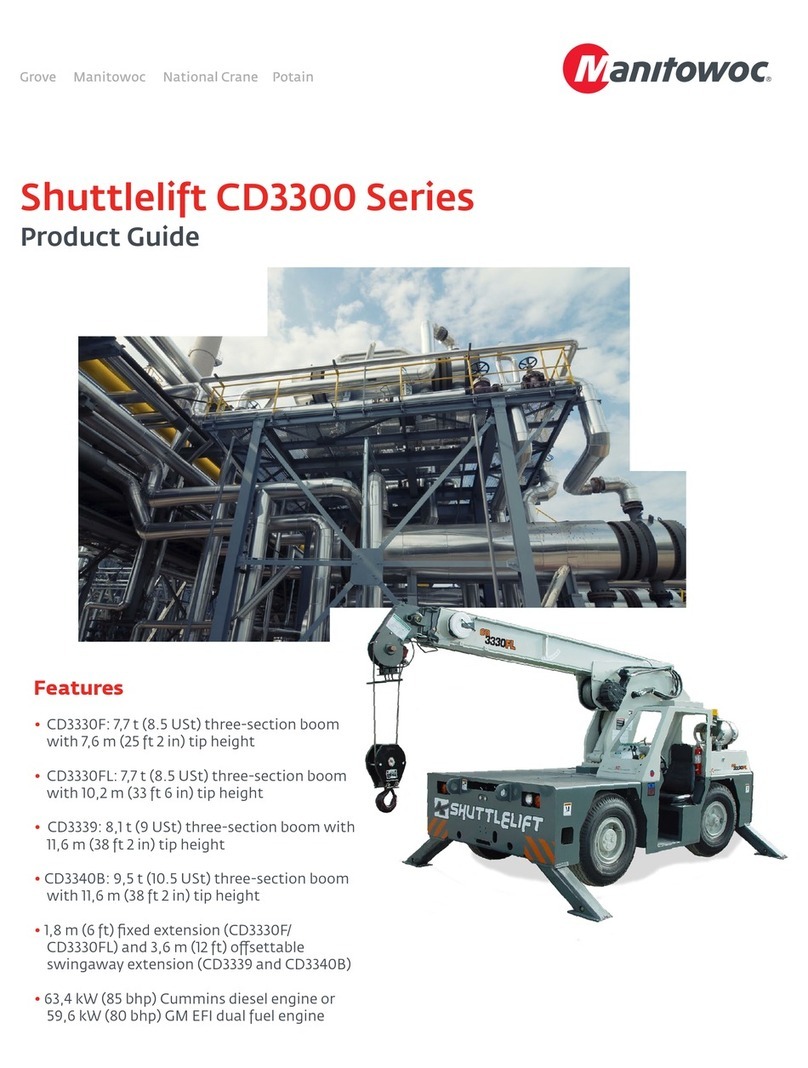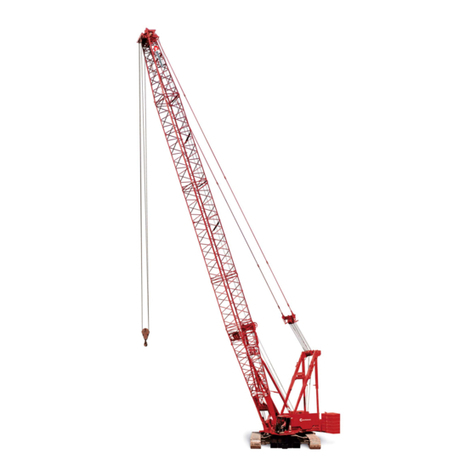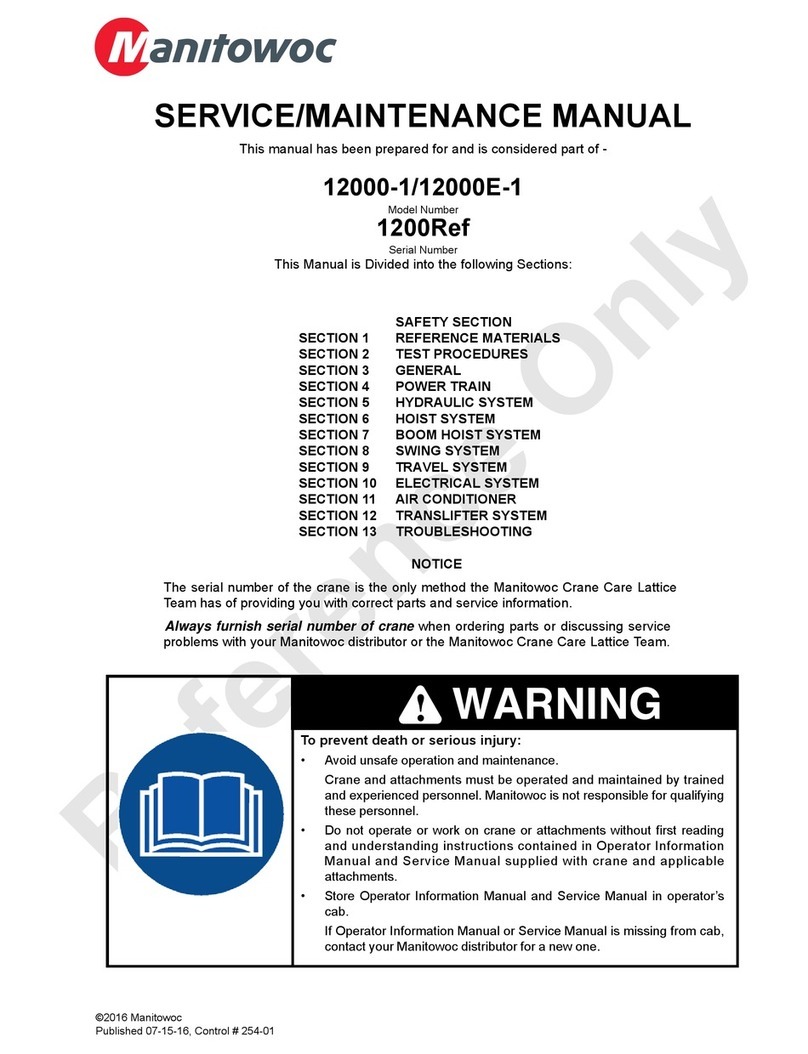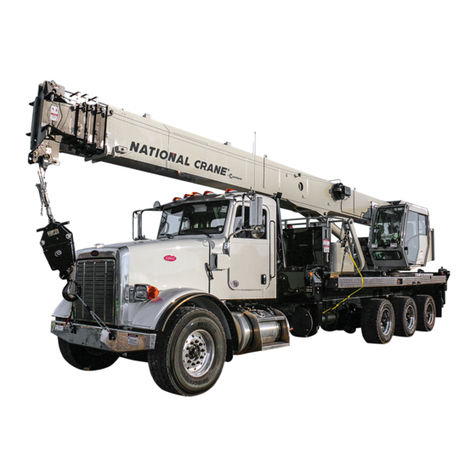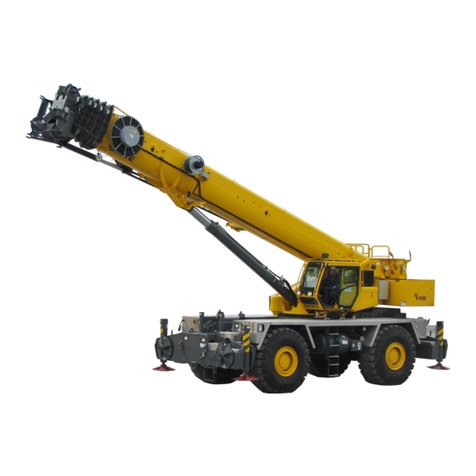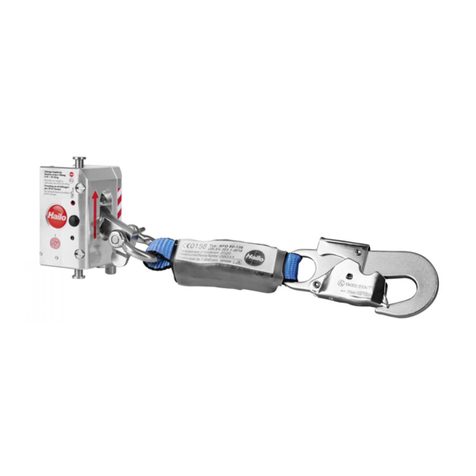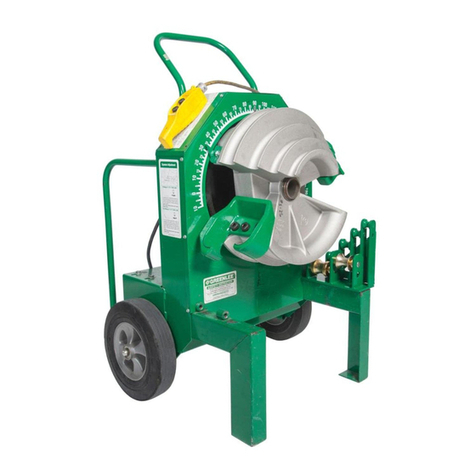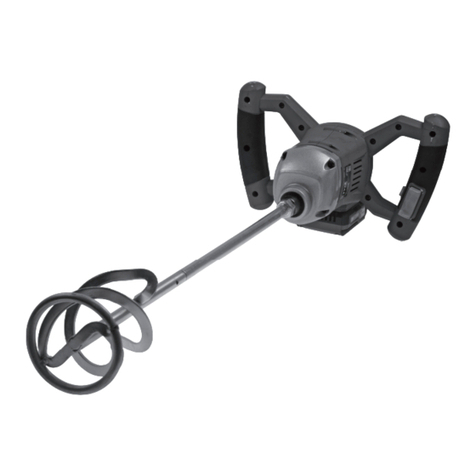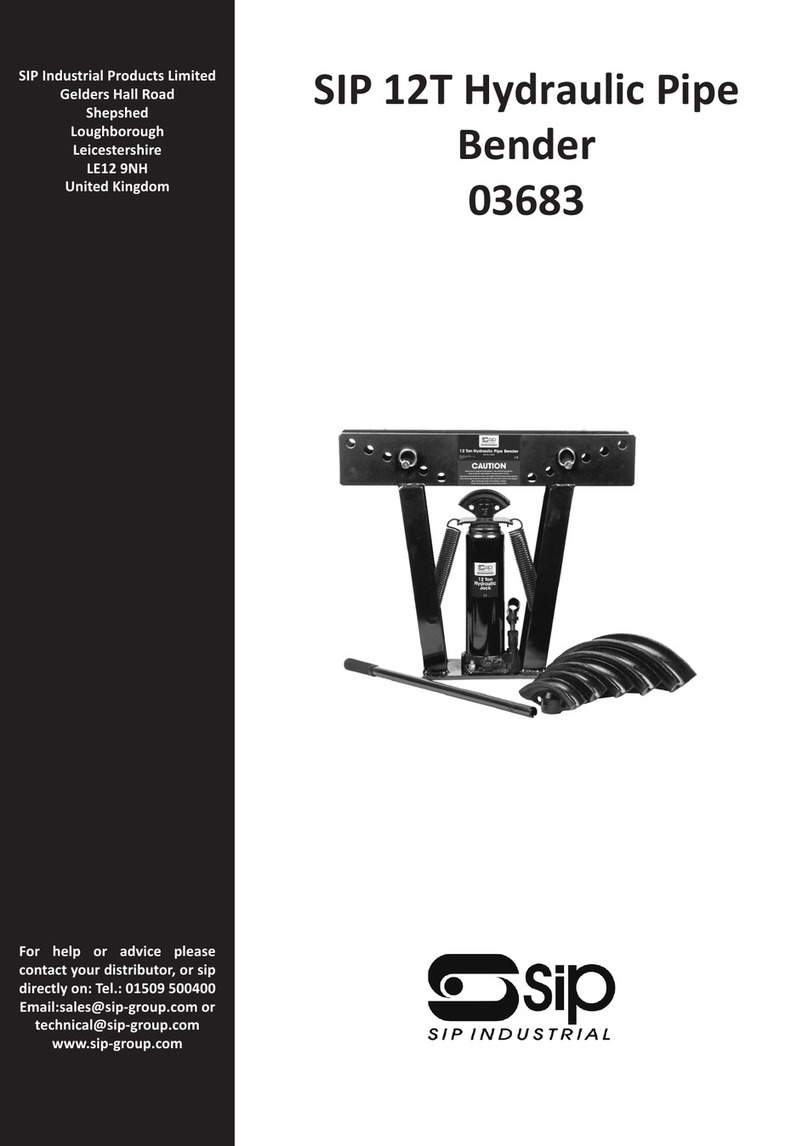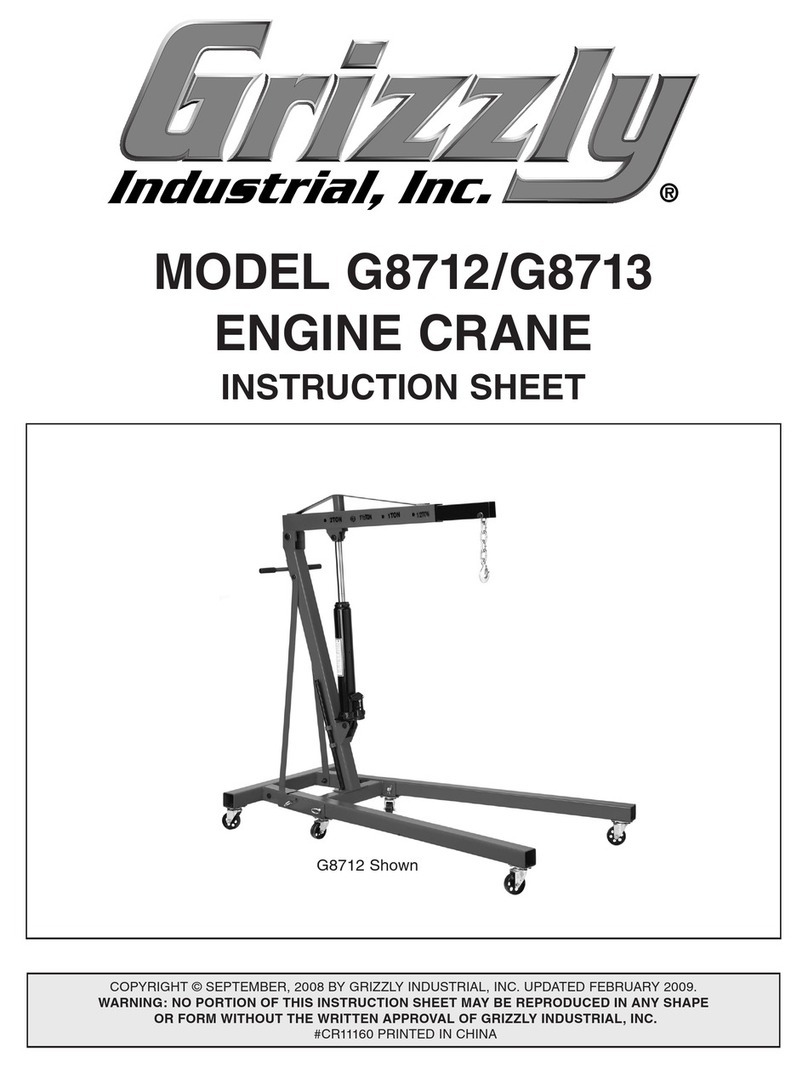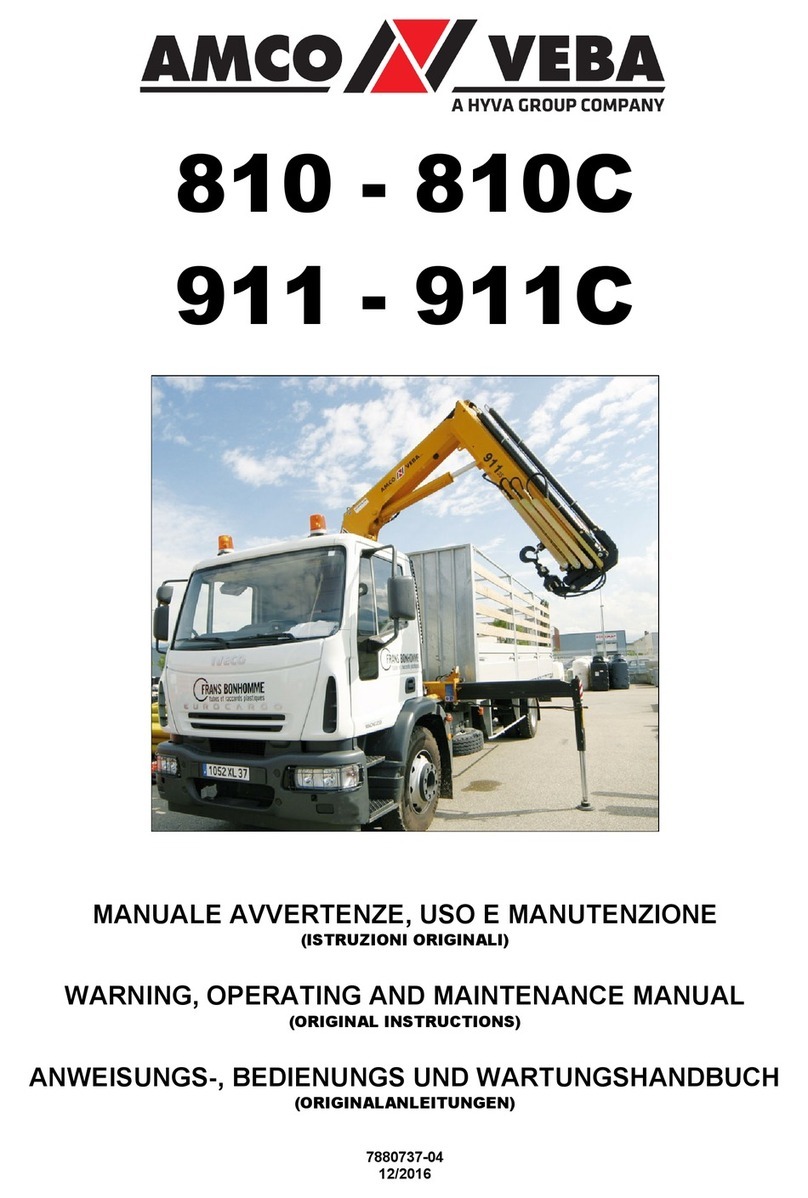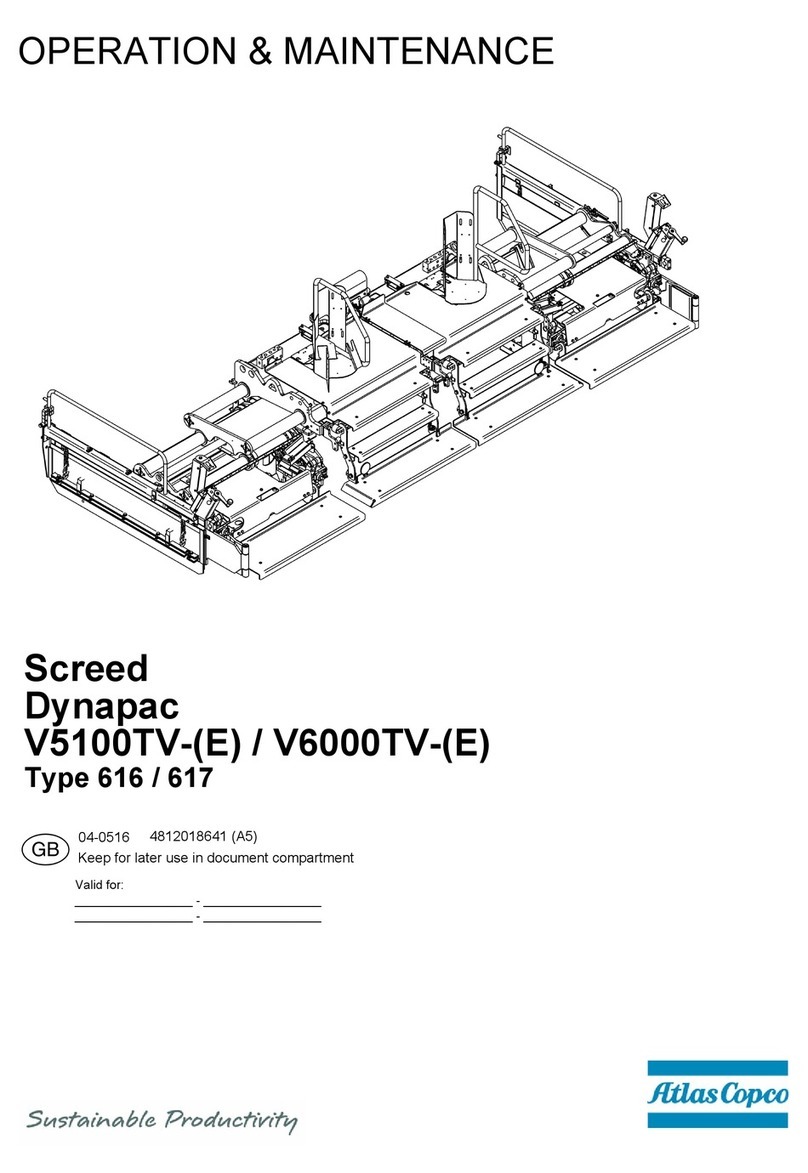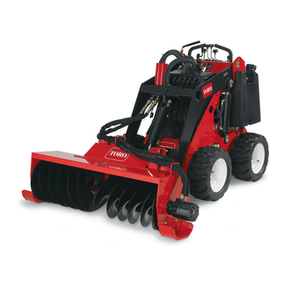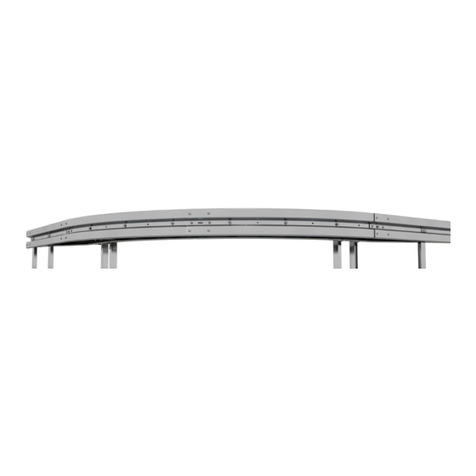
4NBT40-1 S/N xxxxxx
NOTES FOR LIFTING CAPACITIES
GENERAL:
1. Rated loads as shown on lift chart pertain to this equipment as originally manufactured. Modifications to the
equipment or use of optional equipment other than that specified can result in a reduction of capacity.
2. Constructionequipmentcanbehazardousifimproperlyoperatedormaintained.Operationandmaintenanceofthis
equipmentshallbeincompliancewiththeinformationintheOperator’sManual,ServiceManual,andPartsManual
supplied. If these manuals are missing, order replacements from the manufacturer through the distributor.
3. The operator and other personnel associated with this equipment shall fully acquaint themselves with the latest
American National Safety Standards (ASME/ANSI) for lifting devices.
SETUP:
1. Theequipmentshall beleveland onafirm supportingsurface.Dependingon thenatureof thesupportingsurface,
it may be necessary to have structural supports under the outrigger floats to spread the load to a larger bearing
surface.
2. For outrigger operation, all outriggers shall be properly extended with tires raised free of equipment weight before
operating the boom or lifting loads.
3. When the equipment is equipped with center front stabilizer, the front stabilizer shall be set in accordance with
instructions in Operator’s Manual.
4. When equipped with removable and/or extendible counterweight, the proper counterweight shall be installed and
fully extended before and during operation.
5. With certain boom and hoist tackle combinations, maximum capacities may not be obtainable with standard cable
lengths.
6. Unless approved by the crane manufacturer, do not travel with boom extension, jib or platform erected unless
otherwise noted. Refer to Operator’s Manual for job-site travel information.
7. Inspect vehicle and lifting devices, including operation prior to use each day.
8. Always level the equipment with the level indicator located at each outrigger control station.
OPERATION:
1. Ratedloads atrated radiusshallnotbeexceeded. Donotattempttotipthemachinetodetermineallowableloads.
Forclamshell,grapple,magnetorconcretebucketoperation,weightofcomponentandloadmustnotexceed80%
of rated lifting capacities.
2. AllratedloadshavebeentestedtoandmeettherequirementsofSAEJ1063-CantileveredBoomCraneStructures
- Method of Test, and do not exceed 85% of the tipping load on outriggers fully extended, and SAE J1289 - Mobile
Crane Stability Ratings [1.25P < (T-0.1A)] on outriggers 50% and 0% extended (fully retracted) as determined by
SAE J765 - Crane Stability Test Code.
3. Ratedloadsincludetheweightofhookblock,slingsandauxiliaryliftingdevicesandtheirweightsshallbesubtracted
fromthelistedratingto obtain the netloadtobe lifted. When more thantheminimumrequired parts of lineneeded
to pick the load are used, the additional rope weight as measured from the lower sheaves of the main boom nose
shallbeconsidered part oftheload to belifted.When boththehookblock andheadacheballare reeved,thelifting
devicethatisNOTinuse,includingthelineasmeasuredfromthelowersheave(s)ofthenosesupportingtheunused
device shall be considered part of the load.
4. Load ratings are based on freely suspended loads. No attempt shall be made to move a load horizontally on the
ground in any direction.
5. The maximum in-service wind speed is 20 m.p.h. on the boom capacities and 15 m.p.h. on the jib capacities. It is
recommendedwhenwindvelocityisabove20m.p.h.,ratedloadsandboomlengthsshallbeappropriatelyreduced.
For equipment not in-service, the main boom should be retracted and lowered with the swing brake set in wind
velocities over 30 m.p.h.
6. Rated loads are for lift crane service only.
7. Do not operate at a radius or boom length where capacities are not listed. At these positions, the equipment may
overturn without any load on the hook.
8. The maximum load which can be telescoped is not definable because of variations in loadings and crane
maintenance, but it is safe to attempt retraction and extension of the boom within the limits of the capacity chart.
9. When the boom length or lift radius or both are between values listed, the smallest load shown at either the next
larger radius or next longer or shorter boom length shall be used.
10. For safe operation, the user shall make due allowances for his particular job conditions, such as: soft or uneven
ground, out of level conditions, high winds, side loads, pendulum action, jerking or sudden stopping of loads,
experience of personnel, two machine (tandem) lifts, traveling with loads, electric wires, obstacles, hazardous
conditions, etc. Side pull on boom or jib is extremely dangerous.
